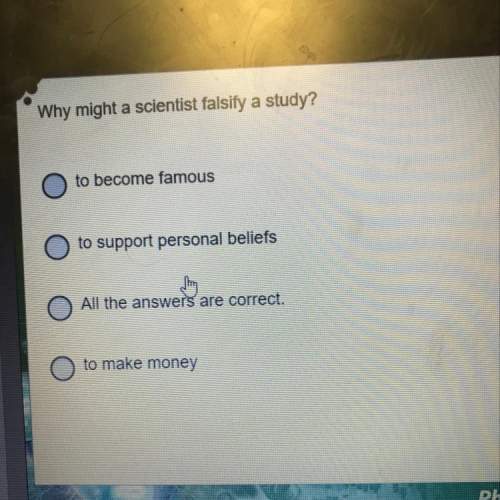
Physics, 25.07.2019 11:30 darwincortez659
Light of frequency 6.00 × 1014 hz illuminates a soap film (n = 1.33) having air on both sides of it. when viewing the film by reflected light, what is the minimum thickness of the film that will give an interference maximum when the light is incident normally on it? (c = 3.00 × 108 m/s)

Answers: 1
Another question on Physics

Physics, 21.06.2019 17:00
Why is alternating current more effective at long–distance travel than direct current? a. the power lines are made out of conductors. b. transformers increase or decrease voltage as needed. c. the ac generator is more efficient. d. ac has lower voltage than dc.
Answers: 1

Physics, 21.06.2019 23:00
Follow these directions and answer the questions. 1. set up the ripple tank as in previous investigations. 2. bend the rubber tube to form a "concave mirror" and place in the ripple tank. the water level must be below the top of the hose. 3. generate a few straight pulses with the dowel and observe the reflected waves. do the waves focus (come together) upon reflection? can you locate the place where the waves meet? 4. touch the water surface where the waves converged. what happens to the reflected wave? 5. move your finger twice that distance from the hose (2f = c of c, center of the curvature) and touch the water again. does the image (the reflected wave) appear in the same location (c of c)? you may have to experiment before you find the exact location. sometimes it is hard to visualize with the ripple tank because the waves move so quickly. likewise, it is impossible to "see" light waves because they have such small wavelengths and move at the speed of light. however, both are examples of transverse waves and behave in the same way when a parallel wave fronts hit a curved surface.
Answers: 1

Physics, 22.06.2019 19:30
What characteristics of hv2112 make it the best candidate to be classified as a thorne-zytkow object?
Answers: 3

Physics, 23.06.2019 00:00
You are driving to the grocery store at 20 m/s. you are 110m from an intersection when the traffic light turns red. assume that your reaction time is 0.50s and that your car brakes with constant acceleration. how far are you from the intersection when you begin to apply the brakes? what acceleration will bring you to rest right at the intersection? how long does it take you to stop after the light changes? the known values: vi=20m/s xi=110m t=.50s vf=0m/s xf=0m a=?
Answers: 3
You know the right answer?
Light of frequency 6.00 × 1014 hz illuminates a soap film (n = 1.33) having air on both sides of it....
Questions

Mathematics, 18.03.2021 01:40

Mathematics, 18.03.2021 01:40



Mathematics, 18.03.2021 01:40

Mathematics, 18.03.2021 01:40



Mathematics, 18.03.2021 01:40

Mathematics, 18.03.2021 01:40




Mathematics, 18.03.2021 01:40

Mathematics, 18.03.2021 01:40

Mathematics, 18.03.2021 01:40

Computers and Technology, 18.03.2021 01:40



 --- (1)
--- (1) =
=  =
= 







